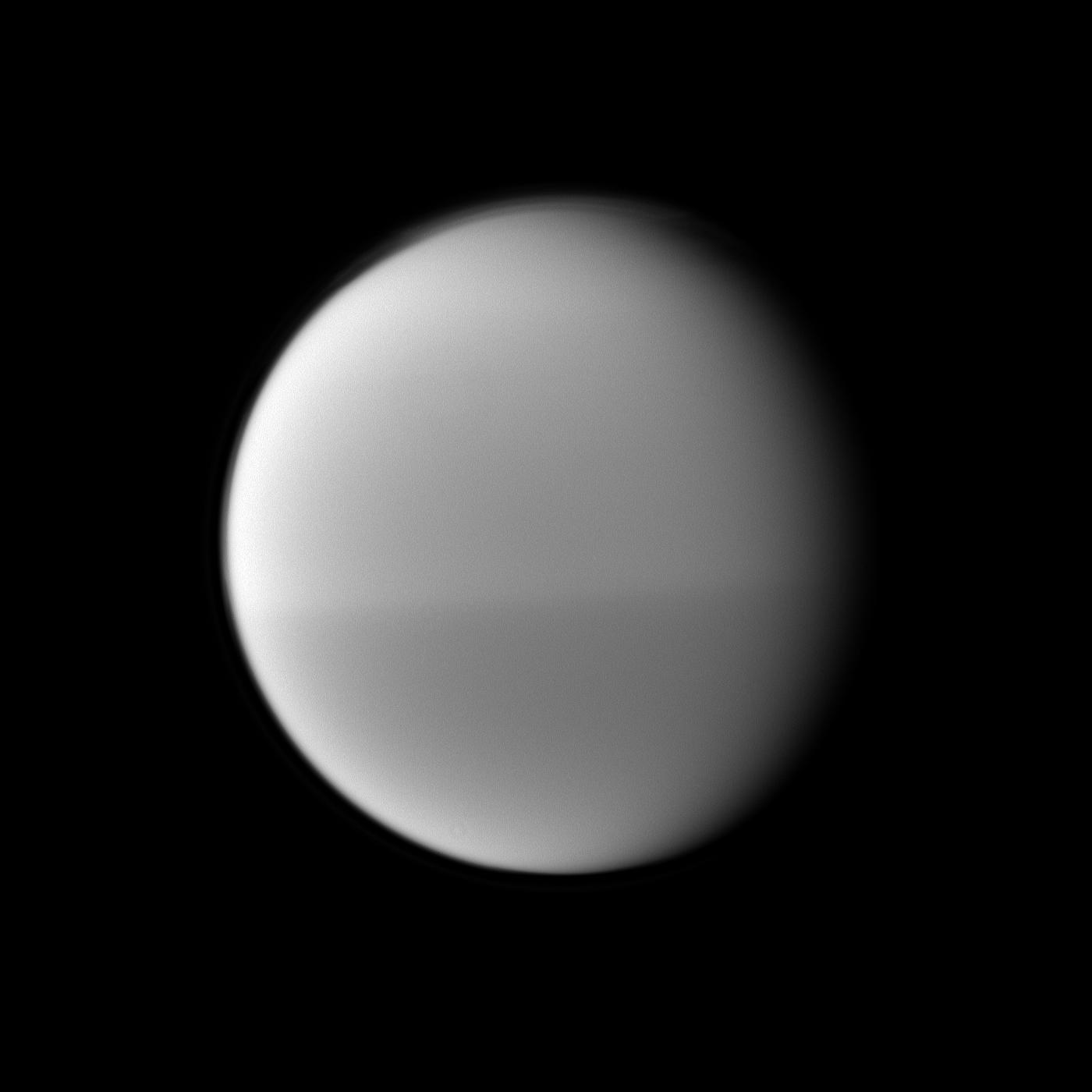NASA JPL-Caltech | Cassini Solstice Mission | 2011 Feb 18
NASA's Cassini spacecraft is set to skim close to Saturn's moon Titan on Friday, Feb. 18, to learn about the interaction between Titan and Saturn's magnetosphere, the magnetic bubble around the planet.
The closest approach will take place at 8:04 a.m. PST (4:04 p.m. UTC) and bring Cassini within about 3,650 kilometers (2,270 miles) of Titan's surface.
As Titan makes a complete 360-degree orbit around Saturn, the relative influence of the sun's illumination and the hot ionized gas trapped in the magnetic bubble changes. These factors are important for understanding the relationship between Titan and Saturn's magnetosphere. It is important to make measurements at a variety of locations in the Saturn magnetosphere, so this flyby will occur in a part of the magnetosphere that has been poorly sampled so far.
Previous flybys have shown the magnetic environment near Titan to be rather variable and unpredictable. For 12 hours before and after closest approach, the Cassini plasma spectrometer instrument will be pointing in a direction to capture ionized gas in the region.
At the same time, Cassini's radio science subsystem will be gathering sensitive gravity data from Titan to improve understanding of the structure of the interior. Collecting data like these will eventually enable scientists to determine whether Titan has an ocean under its crust.
Other instruments will also be collecting data, much of it pertaining to seasonal change. Titan is currently in northern spring, approaching northern summer, and scientists want to know what has changed with the north polar winter vortex weather pattern. The composite infrared spectrometer, for instance, will be mapping temperatures in Titan's stratosphere. The imaging science subsystem will also be monitoring the lakes, clouds and transport of aerosols in the Titan atmosphere.
This latest flyby is dubbed "T74," though planning changes early in the orbital tour have made this the 75th targeted flyby of Titan.
http://www.nasa.gov/cassini/
http://saturn.jpl.nasa.gov/
Titan Flyby (T-74): Saturn’s Magnetosphere and Titan
NASA JPL-Caltech | Cassini Solstice Mission | 2011 Feb 18
This is a post-dusk, upstream, high altitude 'blind' flyby that will be useful to characterize the background magnetic field in which Titan sits. The Cassini plasma spectrometer (CAPS) will observe Titan's plasma interaction as the moon moves from south to north of Saturn's solar-wind-warped magnetodisk from one solstice to the next. Radio science (RSS) will conduct a collaborative observation with CAPS. The RSS instrument team has two related goals: measure the fluid and dynamic Love number of Titan and determine Titan's geoid. The determination of the fluid Love number is the only way to find out with confidence whether Titan has a liquid ocean. The determination of the geoid is crucial to understanding the internal structure of Titan through correlative analysis of the gravity and Radar planetary radii data.
Quick Look Facts (pdf)
Titan Image Gallery
Saturn's Moons

